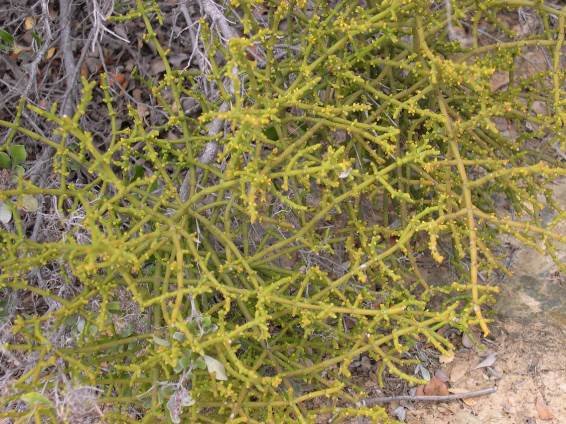Viscum hoolei

Viscum hoolei is a leafless, woody, aerial hemiparasite reaching 50 cm in diameter on the branch of a host tree or shrub, mostly Searsia shrubs and trees. Hemiparasitic plants have chlorophyll and can photosynthesise to produce some of their own nutrients. The many branched stems of V. hoolei are blue green to yellowish green and cylindrical.
This plant resembles V. capense, but its flowers are bisexual or mostly so, the stem internodes longer and the stem-tips thinner. There are as many stamens as perianth segments, positioned in bract cups, the ovaries inferior and their locules single. Flowering happens mostly in the early part of winter.
The species was first collected and scientifically dealt with only in and after 1976.
The species distribution is in the south and centre of South Africa, the plants found in the eastern and central parts of the Western Cape, the west of the Eastern Cape, the southeast of the Northern Cape and the southwest of the Free State; also in Lesotho. The photo was seen on the Minwater farm near Oudtshoorn.
The habitat is semi-arid fynbos, renosterveld, karoid scrubveld, thicket and grassland. The species is not considered threatened in habitat early in the twenty first century (Curtis-Scott, et al, 2020; Leistner, (Ed.), 2000; iNaturalist; https://kromme-geelhout-database.co.za; https://www.worldfloraonline.org; http://redlist.sanbi.org).

